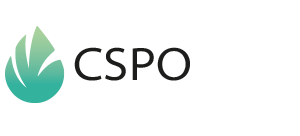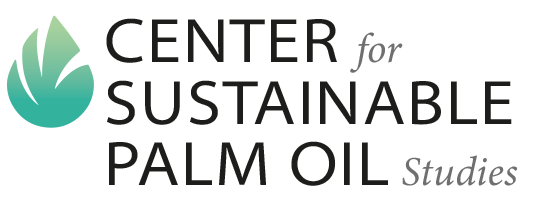
FoodIngredientsFirst speaks to leading suppliers to explore the challenges, solutions and future directions in traceable food, which have become even more relevant in light of the COVID-19 pandemic.
A cross-cutting issue
Traceability is defined by the Codex Alimentarius Commission – the international food standards body set up to establish the “Food Code” for consumer safety – as “the ability to follow the movement of a food through specified stage(s) of production, processing and distribution.”
“Traceability is a cross-cutting issue, and it impacts numerous subjects – consumer health, food security, crop management, supplier relationships and certifications,” observes Violaine Fauvarque, marketing manager at natural gums supplier Alland & Robert.
“It needs to be tackled in all its complexity and not only from a sustainability perspective, so that consumers and customers can really understand the full implications and issues faced by a company. We believe that only a pedagogical approach will help engage and educate the stakeholders.”
Traceability is a cross-cutting issue that impacts consumer health, food security, crop management and supplier relationships.Alland & Robert focuses mainly on the origin of its raw materials that come from the African Sahel. Natural gums are exudates derived from wild trees growing in the desert.
The supplier is able to identify not only the harvest countries or harvest regions, but also to trace the specific villages where the gums are harvested, which can be quite a challenge depending on the organization of the product chain.
“Organic acacia gum requires a specific traceability policy, and we work to apply the same policy to all our products, whether organic or not,” stresses Fauvarque.
“In addition, we constantly look for new certifications to achieve transparency in sourcing. Alland & Robert has been a member of [auditors] SEDEX, CDP and EcoVadis for several years.”
Hurdles to transparency
A key challenge in defining something as truly traceable is the proliferation of different definitions and indicators for monitoring, underscores Suzanne Uittenbogaard, value chain manager, Cocoa & Chocolate at Cargill.
“Without industry consensus, it makes it harder to interpret, understand and report on progress to a fully traceable supply chain,” she continues. “That’s why we support efforts to align definitions, ambitions and reporting requirements.”
Across commodity segments like cocoa, palm and soy, Cargill is working with industry groups to develop a unified approach to what qualifies as traceable.
A key challenge in defining something as truly traceable is the proliferation of different definitions and indicators for monitoring.Accurate data collection is another consideration. “Within our palm supply chain alone, we work with more than a thousand suppliers, with different levels of maturity around data collection,” comments Sophia Savvides, PalmWise product owner, global edible oil solutions, Cargill.
“Many are very small with limited technological resources, and that creates disparity around how much data we’re able to collect. Work remains, but we continue to make progress.”
Importance of centralized data
Within Cargill’s direct supply chain, the agri-food giant holds greater control. “Earlier this year, we partnered with a third-party verification organization, Preferred by Nature, to develop clearly defined guidelines to verify Cargill and our direct suppliers comply with our No Deforestation, No Peat, and No Exploitation (NDPE) commitments,” says Savvides.
“These guidelines will be used by independent auditors to annually verify continued compliance, giving our customers further confidence in the sustainably-sourced palm oil from our direct supply chain.”
One traceability tool Cargill is employing is its suite of “Wise” digital portals for cocoa, palm and soy crops – CocoaWise, PalmWise and SoyaWise. These portals enable Cargill customers around the world to easily access details about where and how crops are being grown and processed, and each portal is tailored to the crop it serves.
Through this system, information is pooled toward a centralized data platform, where all Cargill’s sustainability and traceability data is stored.
Engaging end consumers
Karst Kooistra, global sourcing director at Tradin Organic, anticipates a boom in smart GPS locating, farm information collection tools and the use of satellite data and remote sensing.
“At processing level, maintaining traceability of single ingredient products is relatively easy, multi-ingredient products are much more complex,” he outlines.
“All food production starts at the field, so that is where your traceability should start. Then along the supply chain, the information about the original field should stay with the product until it reaches the end consumer.”
Consumer-facing transparency platforms are increasingly popular features across new product launches.Consumer-facing transparency platforms are increasingly popular features across new product launches, such as scannable QR codes on Triscuit packaging that link consumers to information about the brand’s sourcing of white-winter wheat.
Blockchain-enabled storytelling was similarly leveraged in Segafredo Storia single-origin Honduran coffee released earlier this year by Massimo Zanetti Beverage Group, in collaboration with IBM.
“Start collecting much more data and just make it easily accessible, so that at every step of the supply chain any of the parties interested can get all the background information and data at a glance,” says Kooistra.
“To make it more unique and personal, food businesses must show the great background stories of the raw materials down to the farmer level, including the great social impact of their projects.”
Boosting traceability for botanicals
Transparency for marine-sourced ingredients is in high demand as it is for terrestrial produce. International Flavors & Fragrances (IFF) is one of the largest buyers of seaweed for hydrocolloids – such as alginates and carrageenan – and is carefully sourcing red and brown seaweed from cold and warm water locations around the world.
“That is why we developed our Responsible Seaweed Program (RSP),” says Laurens Reiber, IFF Nourish, global innovation leader, reimagine clean and waste.
The program is a comprehensive set of sustainable practices, from the protection of coral reefs to the limiting of shading on sea grasses and efforts to promote worker safety.
In other moves, IFF’s botanical ingredients arm, LMR Naturals by IFF, currently has 33 botanical families and 49 natural ingredients that are certified through Ecocert’s Fair For Life program, including rose from Turkey and geranium oil from Egypt. The nature-sourced ingredients supplier arm of IFF currently has three operational facilities that are Fair For Life certified.
“Achieving these certifications is challenging, as it often involves years of work with growers and communities to improve their practices to meet the necessary criteria,” notes Reiber.
OFI equips community leads with a smartphone app they can use to digitally register farmers and their households, and register social data.In sourcing its blackcurrant buds in France and vanilla from Madagascar, LMR Naturals by IFF leverages blockchain through its interactions with supply partners. Each time a farmer transfers raw material to the local cooperative, the registry captures critical information, such as delivery date, weight and volume, as well as the farm and GPS location of the crop.
Placing people first
Olam Food Ingredients’ (OFI) AtSource platform enables its field teams to collect, transmit and analyze consistent data, even in the most remote locations.
“Alongside this, we’ve also rolled out Child Labour Monitoring and Remediation (CLMRS), and deforestation monitoring across our cocoa supply chain,” says Andrew Brooks, head of cocoa sustainability at OFI.
OFI equips community leads with a smartphone app that they can use to digitally register farmers and their households and upload social data to the Olam Farmer Information System (OFIS).
“Putting this technology in the hands of community leads makes it possible to identify children who are at high risk and take action much more quickly compared to paper-based systems that have traditionally been used,” highlights Brooks.
“With increasing access to networks and technologies, tools for monitoring traceability such as the use of QR codes for supply chain monitoring will become even more commonplace. And technologies like blockchain will continue to evolve for use cases such as food provenance and traceability, trust and transparency and financial inclusion in smallholder supply chains.
By Benjamin Ferrer
Original Link: https://www.foodingredientsfirst.com/news/traceability-tech-suppliers-showcase-smart-systems-for-securing-transparent-food-chains.html


